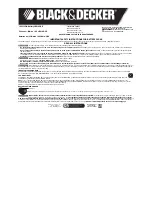
USER
MANUAL
‐
AP680BLC
CHARGER
Manual
version
1.0
We
thank
you
for
buying
the
Pro
‐
Tronik
AP6BLC
charger.
This
high
quality
product
features
a
high
performances
microprocessor
and
a
specialized
software
dedicated
to
the
charge,
discharge
and
cycling
of
RC
models
batteries.
We
recommend
you
to
read
the
entire
manual
before
using
the
charger.
If
you
have
any
doubt
regarding
the
product
usage,
please
ask
assistance
from
an
experienced
modeler,
a
specialist,
or
simply
contact
our
on
‐
line
technical
support
team
on
www.a2pro.fr
.
Overview
•
The
Pro
‐
Tronik
charger
features
many
automatic
functions
which
adjust
the
charging
current
and
voltage
during
charge
/
discharge
process.
Regarding
the
Lithium
batteries,
a
special
process
is
used,
reducing
significantly
the
over
‐
charge
and
fire
risks,
generally
due
to
user
programming
errors.
The
charger
is
designed
to
stop
any
erratic
charge
process,
when
this
arises.
•
The
Pro
‐
Tronik
charger
uses
a
sophisticated
balancing
circuit
allowing
the
charger
to
check
and
balance
each
lithium
cell
in
real
time
(when
balancing
socket
is
used
in).
•
The
charger
program
is
able
to
fast
charge
the
Lithium
batteries,
reducing
the
charge
time
compared
to
standard
charging
process
(please
always
respect
the
cells
manufacturer
recommendations).
The
charger
is
also
able
to
charge
/
discharge
Lithium
cells
in
order
to
store
them
for
several
weeks
without
damaging
the
cells.
A
long
storing
time
can
deteriorate
the
battery
chemistry
and
performances
when
they
are
not
stored
at
an
appropriate
voltage.
•
The
end
charge
function
is
based
on
the
delta
Peak
sensing
method.
When
the
cell
voltage
reaches
a
programmed
value,
the
charge
process
is
automatically
ended
(for
some
batteries
special
values
need
to
be
manually
entered,
please
check
further
sections
of
manual
for
details)
•
It
is
possible
to
let
the
charger
decide
of
the
maximum
charge
current
or
to
input
the
value
manually
when
charging
Ni
‐
Cd
/
Ni
‐
Mh
batteries.
This
can
be
helpful
when
charging
cells
with
low
internal
resistance.
•
The
maximum
capacity
is
always
calculated
on
the
charge
time
multiplicated
on
the
charge
current.
If
a
maximum
(limit)
value
is
set
up,
the
charging
process
will
stop
once
this
value
will
be
reached.
Use
this
function
only
if
you
are
sure
about
the
value
you
enter.















































